Pressure test fire water supply pipe used to carry water to fire sprinkler fire extinguishing. Therefore, before completing the installation to put into acceptance and use, it is advisable to check that the water pipeline has met fire protection standards by testing the pipeline pressure, ensuring that the pump system works well when put into operation.
So the pressure test of the fire water supply pipe needs to follow the standards and regulations like? How is the pressure test of the fire water supply pipe? Hereafter, P69 Company would like to send to customers those standards and processes.
Standards for pressure testing of fire-fighting water supply pipes
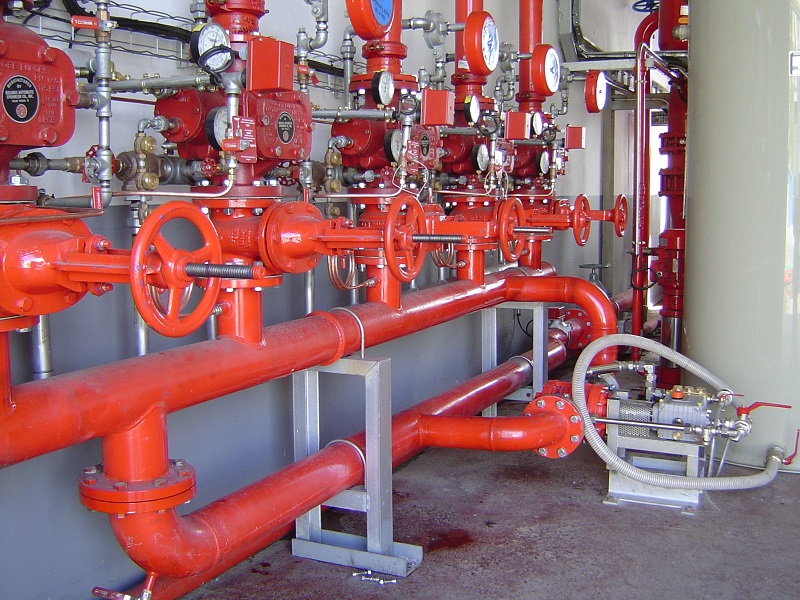
– After laying the pipe, all new pipes must be pressure tested before use, the test pressure at the highest time must be 1.5 times the normal working pressure of the pipe.
– The test pressure should not be less than 1.25 times the maximum working pressure of the pipe section.
– The test pressure ensures that the capacity of the pipe or the designed bearing is not exceeded.
– The pressure test time for each stage must be at least 01 h.
– During the pressure test period, the pressure difference should not be more than ± 0,35 bar.
– If at the end of the pressure test section is a valve or a faucet, the pressure should not exceed twice the valve’s tolerance even though bearing supports are provided.
– For general requirements, we can apply the following pressure test standards:
+ The transmission pipeline with size D = 300 or more has a normal test pressure of 6 bar.
+ Distribution pipeline with D = 100-300, the test pressure is 2-4-2 bar.
+ Service pipeline with D= 32 – 75, the test pressure can be 2-4-2 bar or less.
Necessary equipment for pipeline pressure testing
Pressure pump, pressure gauge, suction hose, connecting hose and some other necessary equipment depending on the case.
Procedure for pressure test of fire water supply pipe
The actual steps of pressure testing of fire water supply pipelines can be as follows:
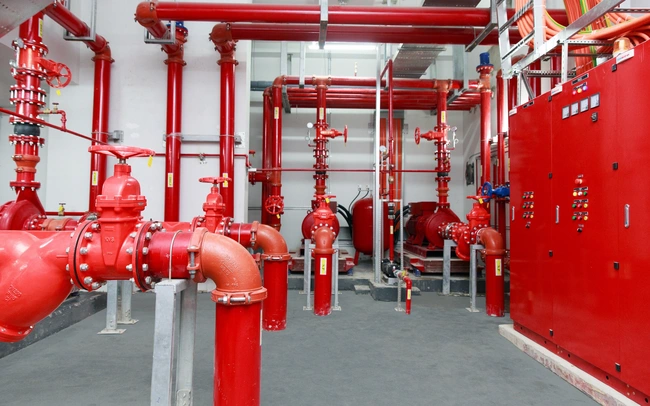
1. Step 1: Select the pipe section or pressure test pipe line
Pressure testing of fire prevention pipelines is a mandatory requirement for all pipelines before acceptance and put into use. Each different pipe segment or route will require a different amount of water supply.
2. Step 2: Choose the right pressure
Based on national technical standards, pressure selection for each individual pipe segment is different.
3. Step 3: Prepare the pressure test pipe end point
If the end of the pipe coincides with a valve or pit, the pressure capacity of the valve and the hole should be considered. If the end point is not a valve pit, it is necessary to reserve concrete blocks covered with steel or wooden load plates for support.
If the diameter of the fire-fighting pipeline is small, it is not necessary to prepare concrete supports but can be replaced with load butts covering the pit.
4. Step 4: Check for water leaks
Before starting, it is necessary to remove all remaining gases in the fire line . Then pump water to fill the piping system.
After the pipeline is full of water, proceed to increase the operating pressure to 3 bar, keep the condition for about 20 minutes and check whether water is leaking from the fire line. If there is a leak, the pipeline should be inspected and repaired immediately.
5. Step 5: Increase pressure slowly and check
Continue to increase the operating pressure to 8bar, maintain for about 10 minutes and continue to check the condition of the fire pipeline. Increase pressure to 10 bar, maintain 20 minutes, continue testing process Boost pressure to 15 bar, hold 1 hour, test.
6. Step 6: Release pressure
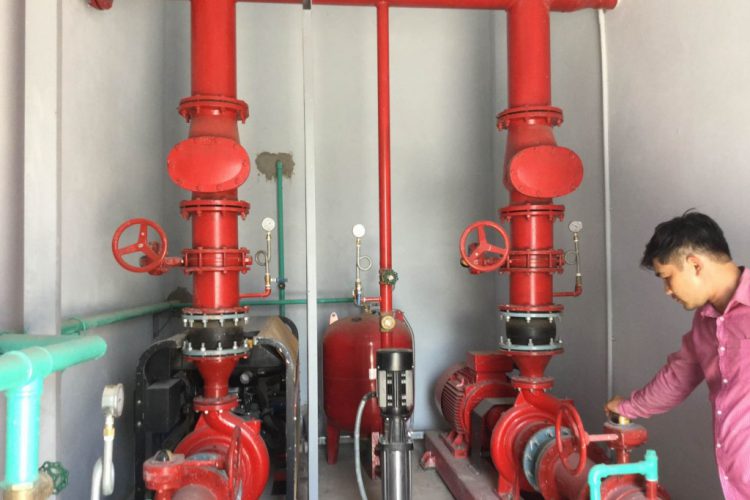
After gradually increasing the operating pressure to 15 bar and testing throughout the process, release the pressure and accept the test results.
Besides, it is possible to apply a test method such as pumping with a pressure 1.5 times greater than the actual working pressure, sealing this situation for 24 hours, then checking the level of pressure drop. . If the pressure drop does not exceed the allowable level, the pipeline has reached the standard.
If there is not enough time, it is possible to test the voltage drop in 12 hours or only 1 hour, but the lower the test time, the more stringent the pressure drop must be.
In addition, the most commonly used practical method at construction sites is to pump with 1.5 or 2 times the working pressure, seal and check the pressure in 24 hours, the pressure drop is within a permissible level. If you want to speed up, you can test 12h or 1h, but the allowable voltage drop will be more stringent. As for the allowed % of voltage drop, you can look it up in the applicable construction site fire acceptance test standards.
Things to note when testing fire water supply pipe pressure
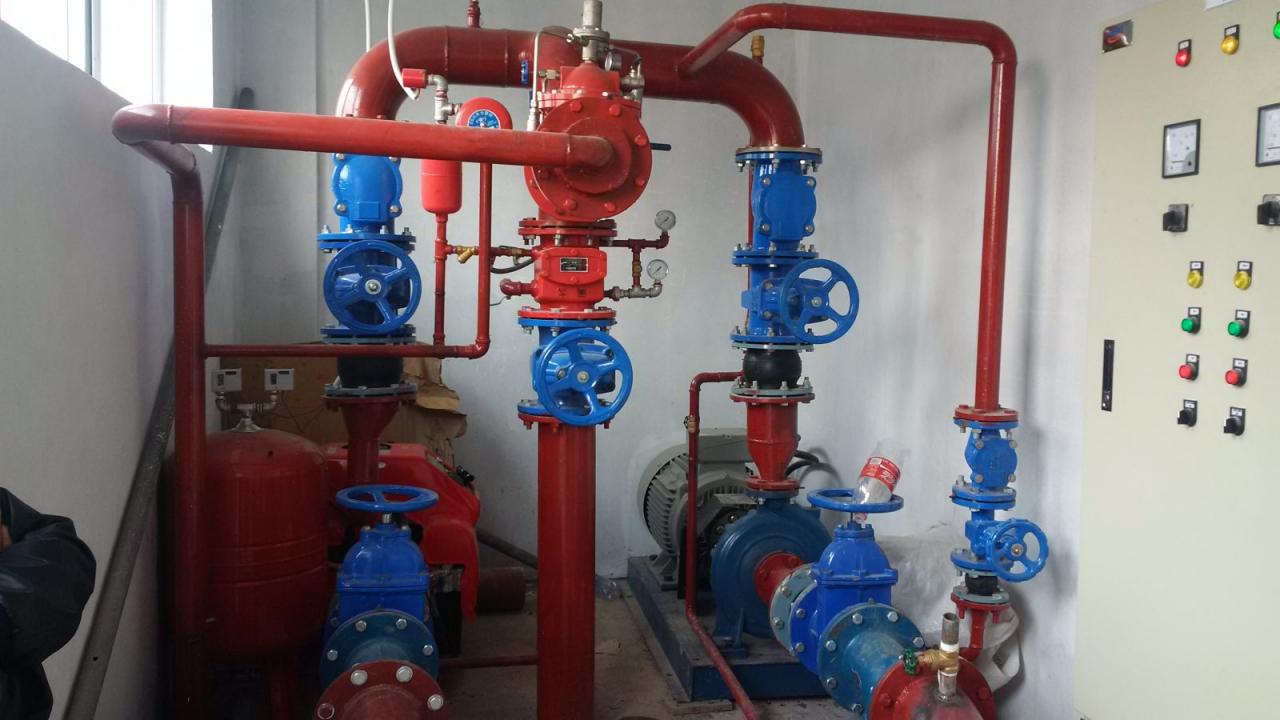
– Before conducting the pressure test, the construction unit will inform the investor in advance about the time of pressure test, the location of the test pipe and the pipeline to be tested.
– Pipeline pressure test must be carried out before putting in place for installation and return. It is possible to test with different individual pipe sections or test with each pipeline. Can be combined with both equipment and joint testing. The test pressure shall be 1.5 times the working pressure.
– During the test, do not re-adjust the joints and if there is any doubt, keep the test pressure value at that time so that the entire pipeline and especially the joints can be inspected and examined. You can see the correlation between the pipe diameter and the quality of the pipe and the water pump.
– Must test pressure before being accepted and put into use. The choice of pressure test of each pipe or pipe line is very important and it depends on the length of the pipe, the pipeline you want to test and the amount of water supplied to test the pressure…
Safety measures when conducting pressure testing
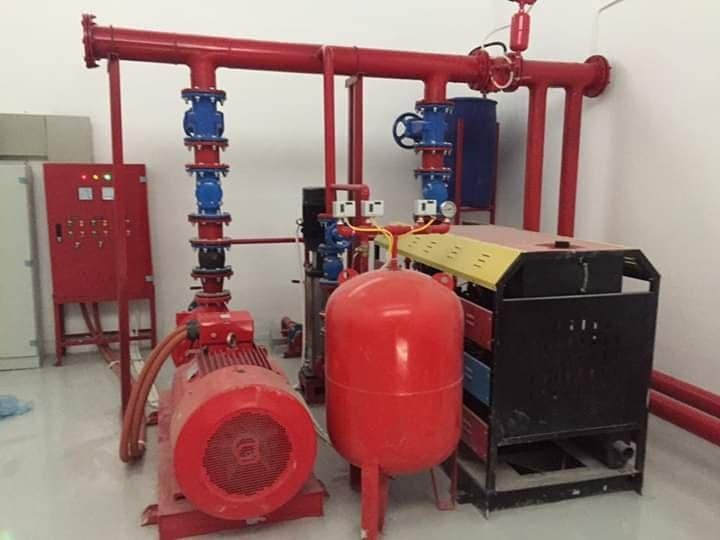
When conducting pressure testing of pipelines and pipelines, the construction unit will always arrange technical staff to directly supervise, monitor and inspect during the testing process. At critical points such as pipe connection positions, other connection positions on the whole route are always arranged to have people on duty to monitor and check.
For example, if there is a problem, it will be directly handled and corrected in time.
Contact us today for a free consultation and answer at:
Contact information P69 – M&E Contractor
Address: No. 6/165C Xuan Thuy, Cau Giay District, Hanoi
Website: https://p69.com.vn/
Hotline: 02437688156 – 0965937799
Email: kd@cokhip69.com.vn
Facebook: https://www.facebook.com/p69nhathaucodien
LinkedIn: https://www.linkedin.com/in/congtyp69/
Youtube : https://www.youtube.com/channel/UCOUwCnE5iGj8iqe_ZIUM7oA

